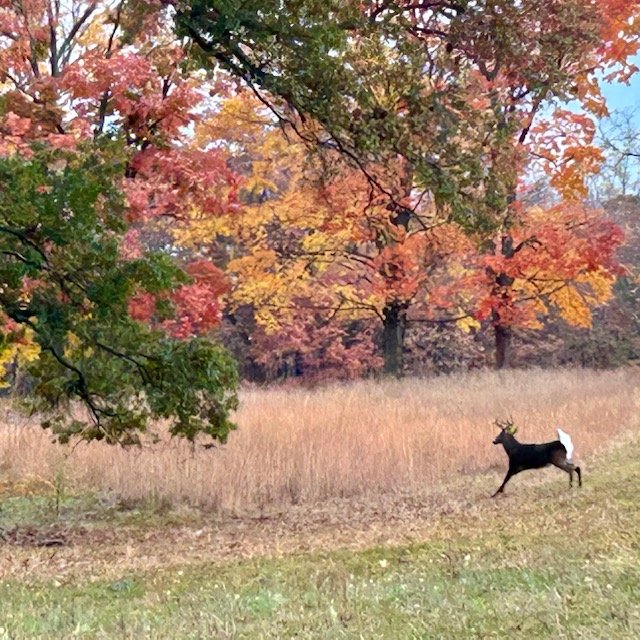I Didn't Know That
How Long Did It Take to Write the Oxford English Dictionary?
The Oxford English Dictionary, also simply known as the OED, is a massive reference book containing not just words—including obsolete ones—and their definitions, but also detailed information on the words’ history and usage.
The project was born in 1857, when the Philological Society of London, a group dedicated to the history of literature and words, established a committee to collect words that didn’t appear in existing dictionaries at the time. Their goal was to document the English language going back to Anglo-Saxon times, which ended around 1000 CE—so quite a lot of territory to cover.
Work started in earnest in 1879, after Oxford University Press signed on to finance and publish the dictionary, at the time called the New English Dictionary (NED). The staff buckled down and got to work reading and researching; editor James Murray estimated the dictionary would take about 10 years to compile.
In 1884, after working on the dictionary for 5 years, the first fascicle (meaning a part of a book) came out. It only covered the words “a” through “ant.” The project was clearly more ambitious than the Philological Society had originally imagined. Murray started working on the dictionary full time, and over the next several years he was joined by another editor and two co-editors, as well as a large group of amateur word-hunters.
The last fascicle was published on April 19, 1928, nearly 50 years after work began. The original plan was for the dictionary to contain 6,400 pages over four volumes; ultimately, the first edition of the NED contained 12 volumes with 15,487 pages, covering a whopping 414,825 words. Today, the OED continues to document the growing English language, and includes more than 600,000 entries, with new words and meanings added regularly.
Source: historyfacts.com
Contributed by Jane Hart
A Time of Drought: Something to Think About
Drought Watch: Please Conserve Water
The New York City Department of Environmental Protection has issued a drought watch for its water customers, which includes the Tarrytown Water System. A drought watch is the first of three tiers of warnings. In addition to the scant rainfall over the past month, the DEP is repairing an important aqueduct.
Please do what you can to conserve water.
Turn off the faucet while shaving, washing up, brushing teeth, and washing dishes.
The average person uses 10.9 gallons of water from the faucet a day.Fix dripping and leaking faucets and toilets.
A faucet leaking 30 drops per minute wastes 54 gallons a month. See the USGS Drip Calculator.Don't run the tap to make water cold or hot.
Instead, keep a pitcher of water in the refrigerator.Put a plastic jug filled with water in the tank of conventional toilets.
You'll save that much volume in water each time you flush.Throw used facial tissues into the waste basket instead of using the toilet as a waste basket.
You'll save up to 6 gallons of water each time you don't flush.Wash only full loads of dishes and laundry. The average dishwasher uses
8-12 gallons whether or not it's a full load.
Install water-saving plumbing fixtures. A low-flow shower head saves up to 7.5 gallons a minute.
Take shorter showers or fill the bathtub only part way.
The average person uses 15 gallons a day in bathing and hygiene.
You can find more helpful tips on the NYS Department of Environmental Conservation website.
Made In NYC: Brands, Trends, and Inventions That Began in the Big Apple
Red Velvet Cake
By Hennem08 - Own work, CC BY-SA 3.0
Although associated with the South, the standard recipe for this classic dessert actually originates with the Waldorf-Astoria. Red velvet cake was a staple at the hotel in the 1920s (that’s their version of it pictured above).
Tootsie Rolls
64 million Tootsie Rolls are made every day. Legend has it that each daily batch picks up from the leftovers of the day before, meaning there’s a trace of the 1907 original in every Tootsie Roll sold today. Like so many New York stories, it began with an immigrant in Brooklyn. Leo Hirschfield came up with the concept, borrowing his daughter Clara’s nickname for its branding. Over a century later, it’s still one of the world’s most popular candies.
Marvel Comics
The Avengers have a place of origin, and it’s New York City. Moe Goodman was born immigrant parents in Brooklyn and went on to found Timely Comics in 1939. From offices in the McGraw-Hill building, and later the Empire State Building, a franchise empire was born. In October 1939, Marvel Comics #1 was published. MCU. movies have gone on to gross more than $29 billion, “making the franchise the most successful in entertainment history,” per a recent New Yorker profile.
Source: “Made In NYC,” by Ethan Wolff, March 2024, City Guide New York
Contributed by Bobbie Roggemann
Words of Wisdom from the Younger Set
Never trust a dog to watch your food. Patrick, age 10
When your dad is mad and asks you, “Do I look stupid?” don’t answer him. Michael, 14
Never tell your mom her diet’s not working. Michael, 14
Stay away from prunes. Randy, 9
Never pee on an electric fence. Robert, 13
Don’t squat with your spurs on. Noronha, 13
For All You Theater Buffs: A Sleepy Hollow High School Theatrical Offering
For Your Funny Bone
Contributed by Mimi Abromovitz
Contributed by Barbara Bruno
Art by Hart
Daniel’s underwater hair salon served a niche market
Pendleton felt safer with the full moon watching over him
Florrie’s files were almost all miscellaneous
Roy had planned to get a canary or a parakeet, but Hazel’s blue eyes won his heart
It was hard to recognize Rubber Ducky after his beak surgery
Art and photos by Jane Hart
Hope, by Sheila Benedis
Hope Scroll
Hope Artist Book
Art and photos by Sheila Benedis
In and Around Kendal
A Sunny Autumn Kendal Morning
Photo by Aruna Raghavn
A Rockwood Stroll
Photos by Carolyn Reiss
A Splendid Halloween Sunset
Photo by Cynthia Ferguson
Photo by Jane Hart
Out and About
Still Recovering From Halloween
Spotted on Hemlock Drive in Sleepy Hollow Manor
Contributed by Valerie Wallace
I Didn't Know That
From The Sissman Chronicles
A Brief Discussion of Photographers
In 1955, the Museum of Modern Art mounted an exhibition of over 500 photographs, called “The Family of Man.” Its enthusiastic reception, followed by foreign showings in most western countries, firmly established photography as an art in addition to being a form of documentation.
The list of famous photographers over the last century and a half is long, and there is not enough room to list them all. One of the earliest Americans was Matthew Brady (no relation to our beloved Kendal photographer, the late Arthur Braady), who created a portable studio with which he traveled to record the carnage of our Civil war battlefields, he also took famous portraits of Lincoln and Grant.
Matthew Brady
In the 20th century, the most famous and accomplished was Henri Cartier-Bresson, who coined the phrase “the decisive moment” as the important component of his work. Equally accomplished, but much less known, is a Brazilian photographer Sebastião Salgado, who roamed South America recording the abominable condition of workers in factories, farms, and mines.
Cecil Beaton portrayed the rich, beautiful, and famous of Britain; his American counterparts were Richard Avedon and Irving Penn. Ansel Adams and Eliot Porter brought us the beauty of America’s wilderness. Adams’ photos were recently featured on a sheet of US stamps.
Ansel Adams Forever Stamps
Among others of note were Margaret Bourke-White, Dorothea Lange, Alfred Stieglitz (who is most famous for his remarkable photos of his nude wife, the painter Georgia O’Keefe), Man Ray, Alfred Eisenstaat, Yousef Karsh, and Robert Capa.
“Migrant Mother,” Dorothea Lange
“D-Day Landing,” Robert Capa
One remarkable but little-known figure is Vivian Maier, whose biography has always fascinated me. She worked her entire life as a nanny to the children of New York’s richest families. But on her time off, she roamed the streets of Manhattan with her Rolleiflex, capturing on film citizens of all levels of affluence and of all ages and identities pursuing their ordinary public activities.
Vivian Maier
After her death, a carton containing thousands of her negatives was discovered. Once they were recognized as extraordinarily beautiful and moving, the best were published in book form!
Vivian Maier
My favorite photograph, after decades of viewing thousands, is by Salgado. While traveling through Ecuador, apparently, he asked a middle-aged peasant couple to pose for a portrait. They stand side by side in the sun with an out-of-focus mountain behind them. They are dressed in their best clothes, neat but black and shabby. Their faces are lined, probably from long hours farming in the open. They gaze benevolently into the camera. Their faces express a calm, unassuming self-satisfaction with their lives and accomplishments, despite their poverty and isolation—conveyed with total dignity. He is holding in his arms a small white lamb; she is cradling, in her cupped hands, a tiny bird!
“The Family,” Sebastião Salgado
Norman Sissman
Alert: Tarrytown Traffic, November 18-22
Made in NYC: 123 Brands, Trends, and Inventions That Began in the Big Apple
Domino Sugar
Domino Sugar began life in 1807 as the W. & F.C. Havemeyer Company, a sugar refiner on Vandam Street in Lower Manhattan. After a half century, the company moved to its iconic Williamsburg location on the East River. A couple of name changes along the way resulted in Domino becoming the official branding in 1900. Domino remains the largest sugar company in the US, headquartered now in Yonkers.
Spaghetti and Meatballs
It may seem like a classic Italian dish, but this dinner-table staple is actually a creation of New York City. Immigrants drew on an age-old combination, but took advantage of better access to meat in the New World. The first recorded recipe for spaghetti and meatballs appeared in 1888, published by New Yorker Juliet Corson in her book Family Living on $500 a Year.
Lionel Trains
Joshua Lionel Cowen founded the Lionel Manufacturing Company near City Hall in 1900. His original business was electronics. The company’s first train, the Electric Express, was built as a storefront display. When the public took interest, Cowen changed tracks and made the trains themselves the focus of the business. Lionel is still making trains today and has the honor of having the first electric toy inducted into the National Toy Hall of Fame.
Source: “Made In NYC,” by Ethan Wolff, March 2024, City Guide New York
Contributed by Bobbie Roggemann
Oxymorons to Spare
Why do you press harder on the buttons of a remote control when you know the batteries are dead?
Why do we put suits in garment bags and garments in a suitcase?
How come abbreviated is such a long word?
Why do we wash bath towels? Aren’t we clean when we use them?
Why doesn’t glue stick to the inside of the bottle?
Why do they call it a TV set when you only have one?
Christmas : What other time of the year do you sit in front of a dead tree and eat candy out of your socks?
Why do we drive on a parkway and park on a driveway?
Contributed by Bobbie Roggemann
For Your Funny Bone
Contributed by Barbara Bruno
Contributed by Barbara Bruno
Contributed by Barbara Bruno
Contributed by Barbara Bruno
Art and Poetry by Sheila Benedis
Hope 2, Collage
* * *
Weeping Beech Tree
weeping beech tree
I come upon your closed side
like a wall of leaves
it seems
to exclude the world
people who are
bitter
cynical
divisive
but then I see your other side
I watch the sunlight
filter through your leafy canopy
oh you
you that is open to the world
you that tries to be inclusive
you that lets in the light
protects people
you that cries out
safety
dignity
justice
you speak
peace and unity for all
for all American people
Art by Hart
Sarah had her hands full working at the complaint desk
It was a grey morning at the flea bath
There were things Miranda preferred to keep hidden
The new community theatre production was controversial and thrilling
Percival’s predictions made no sense at all
Art and photos by Jane Hart
In and Around Kendal
It’s a Puzzlement!
Fulton puzzlers intent on getting those last pieces in!
Photo by Carolyn Reiss
The Penguin Puzzle
A mysterious new member of the Kendal community showed up on Halloween. Upon conversation with the old bird, its voice sounded oddly like Sharry Lukach. Strangely, Sharry did not appear at dinner that night . . . perhaps she was out trick-and-treating.
Photo by Jane Hart
The mysterious new avian Kendal member seems to be a contract-holder; it votes. Clearly a penguin with a community spirit. But will it show up for the Election Run-Off?
Photo by Joe Bruno
Rockwood Magic, by Carolyn Reiss
An early morning moon
Out and About
Cynthia Ferguson reports she, Susan Yao, and Susan’s visiting daughter took off to experience one of the area’s Halloween spectacular events: The Blaze.
Photo by Cynthia Ferguson




























































